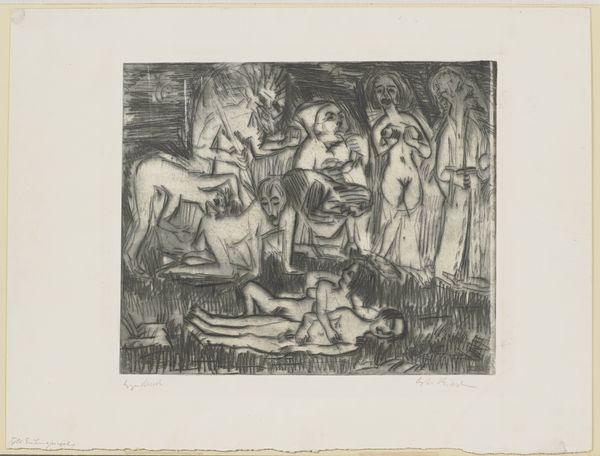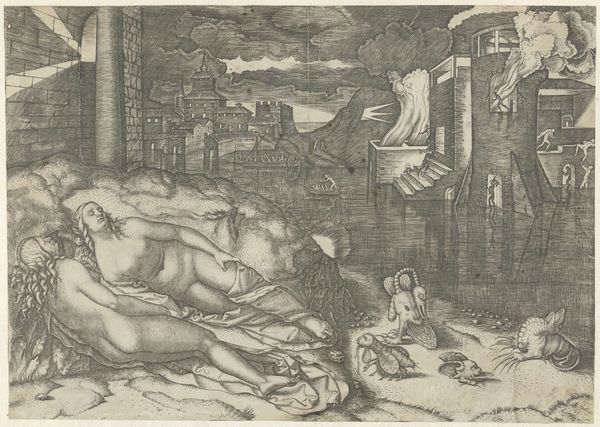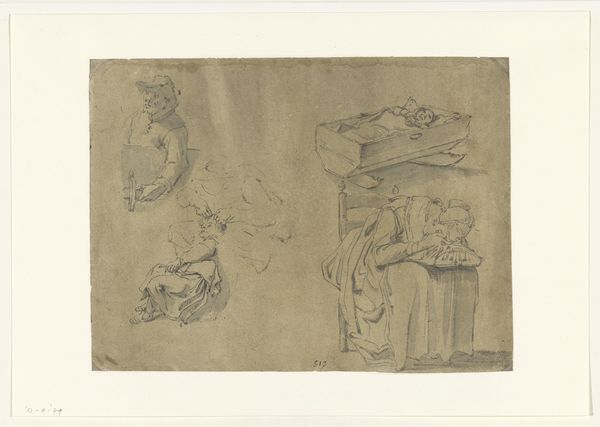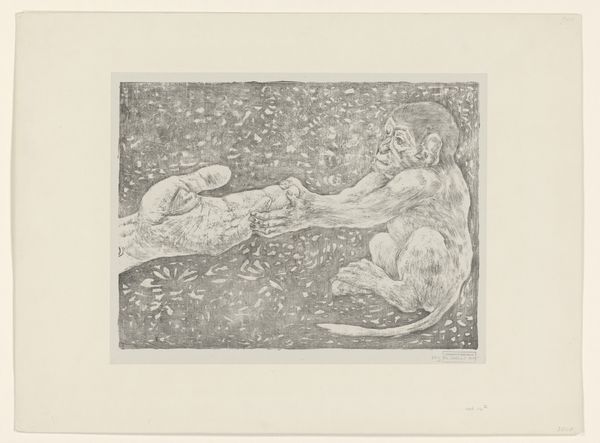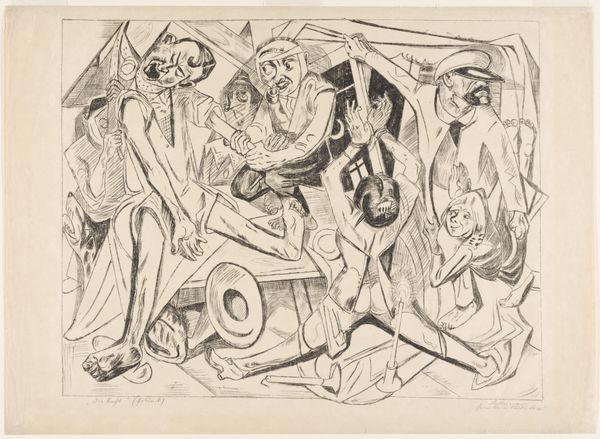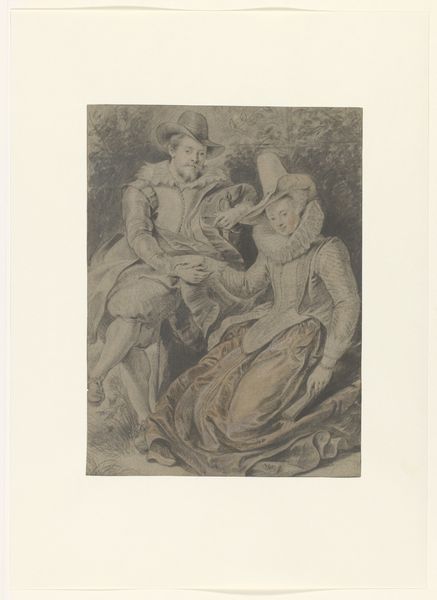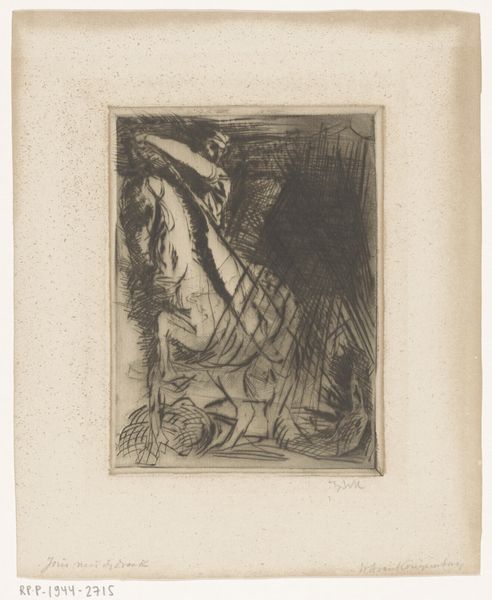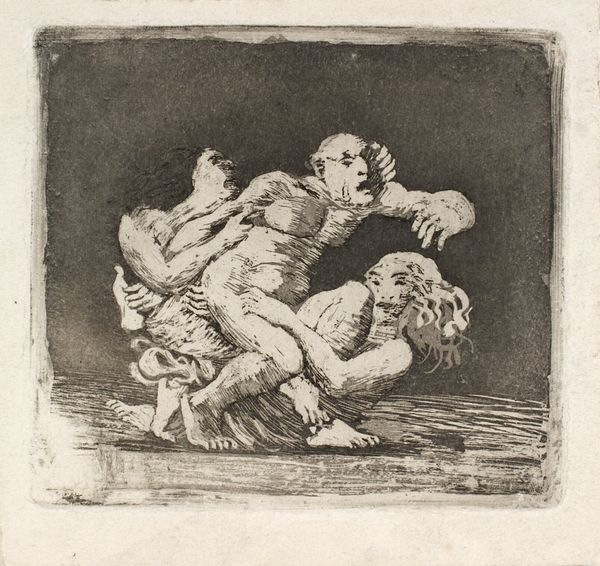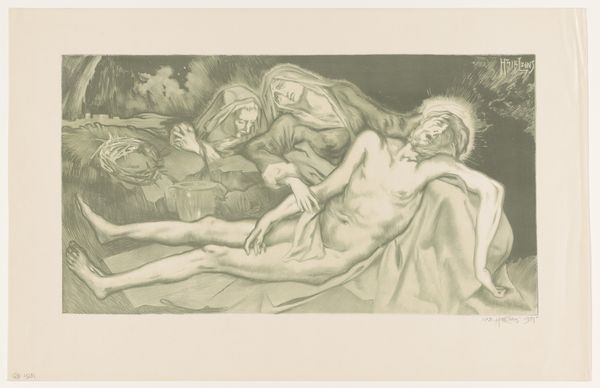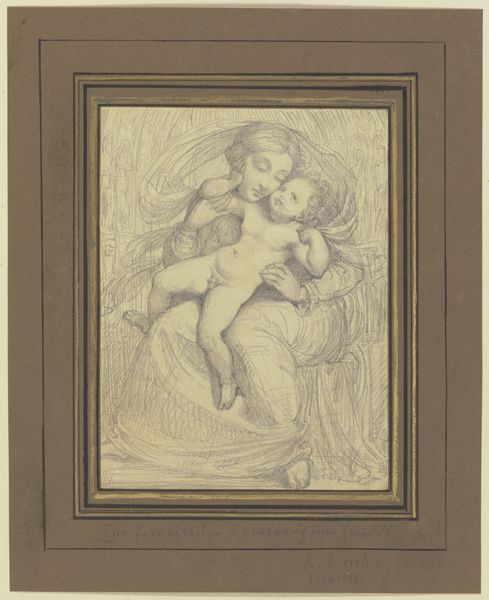
drawing, pencil, graphite
#
portrait
#
pencil drawn
#
drawing
#
charcoal drawing
#
figuration
#
pencil drawing
#
pencil
#
graphite
#
genre-painting
Dimensions: height 498 mm, width 424 mm
Copyright: Rijks Museum: Open Domain
Editor: This is "Vijf apen in een hok" by Theo van Hoytema, created between 1899 and 1900. It's a graphite and pencil drawing currently housed in the Rijksmuseum. I find it really somber, almost melancholic. What strikes you most about it? Curator: The image invites us to reflect on captivity, doesn’t it? Hoytema, active in social and political movements, especially for animal welfare, would have understood the confinement depicted here beyond its immediate representation. Editor: Can you elaborate? Curator: Think about the period – the late 19th century. There's increasing urbanization, industrialization…and expanding colonial projects that include collecting animals for zoos. How might this image function as a subtle critique of power dynamics inherent in these practices? Consider, too, the emerging fields of primatology and evolutionary biology and the simultaneous popular fascination with, and othering of, primates. What narratives are constructed through the act of observation, display, and scientific study? Editor: I never considered the colonial aspect. So, the "cage" is both literal and metaphorical? It represents a larger system of control? Curator: Precisely. And doesn't their introspective posture make you question whether Hoytema is commenting on the limitations placed upon intellectual or creative freedom, not just for animals but, perhaps implicitly, for humans as well? The use of drawing itself becomes significant. It captures vulnerability, stillness, and, maybe, silent protest. Editor: That’s a powerful connection. I initially saw sadness, but understanding the historical context gives the image a new layer of meaning—almost a quiet rebellion. Curator: Indeed. By placing these primates in captivity under observation, we might also be examining ourselves. The work becomes a reflection on the ethics of looking, understanding, and ultimately, control.
Comments
No comments
Be the first to comment and join the conversation on the ultimate creative platform.
